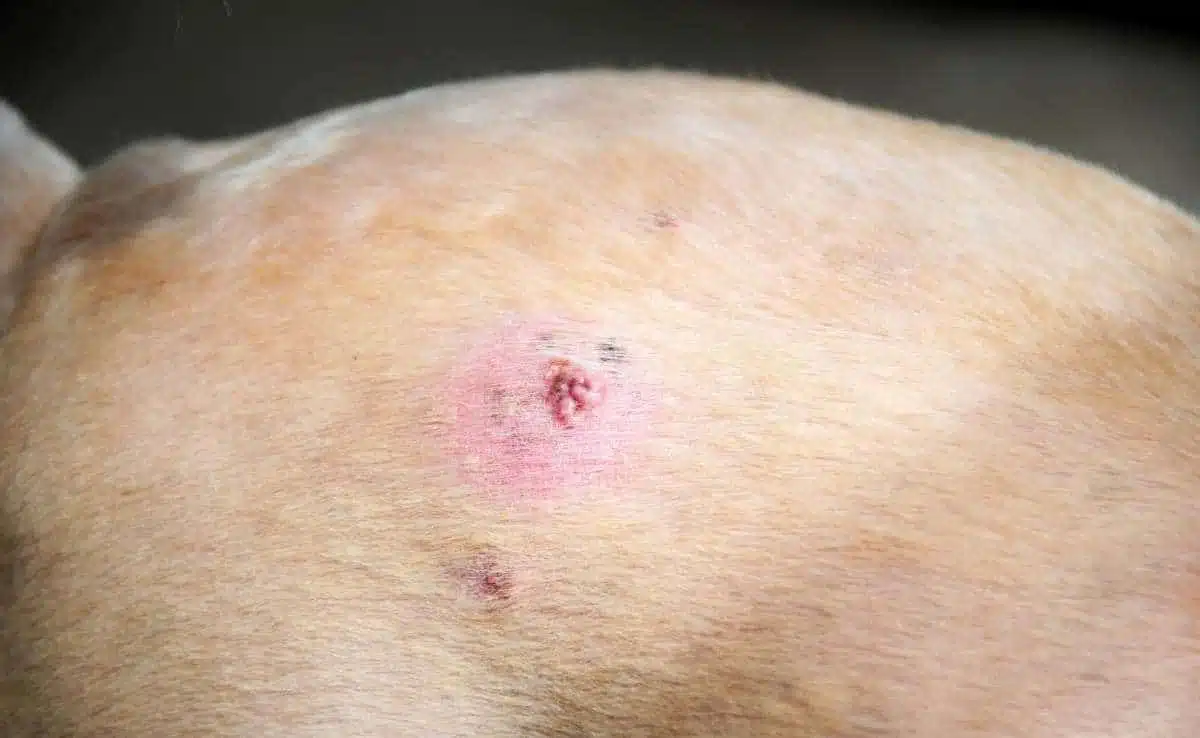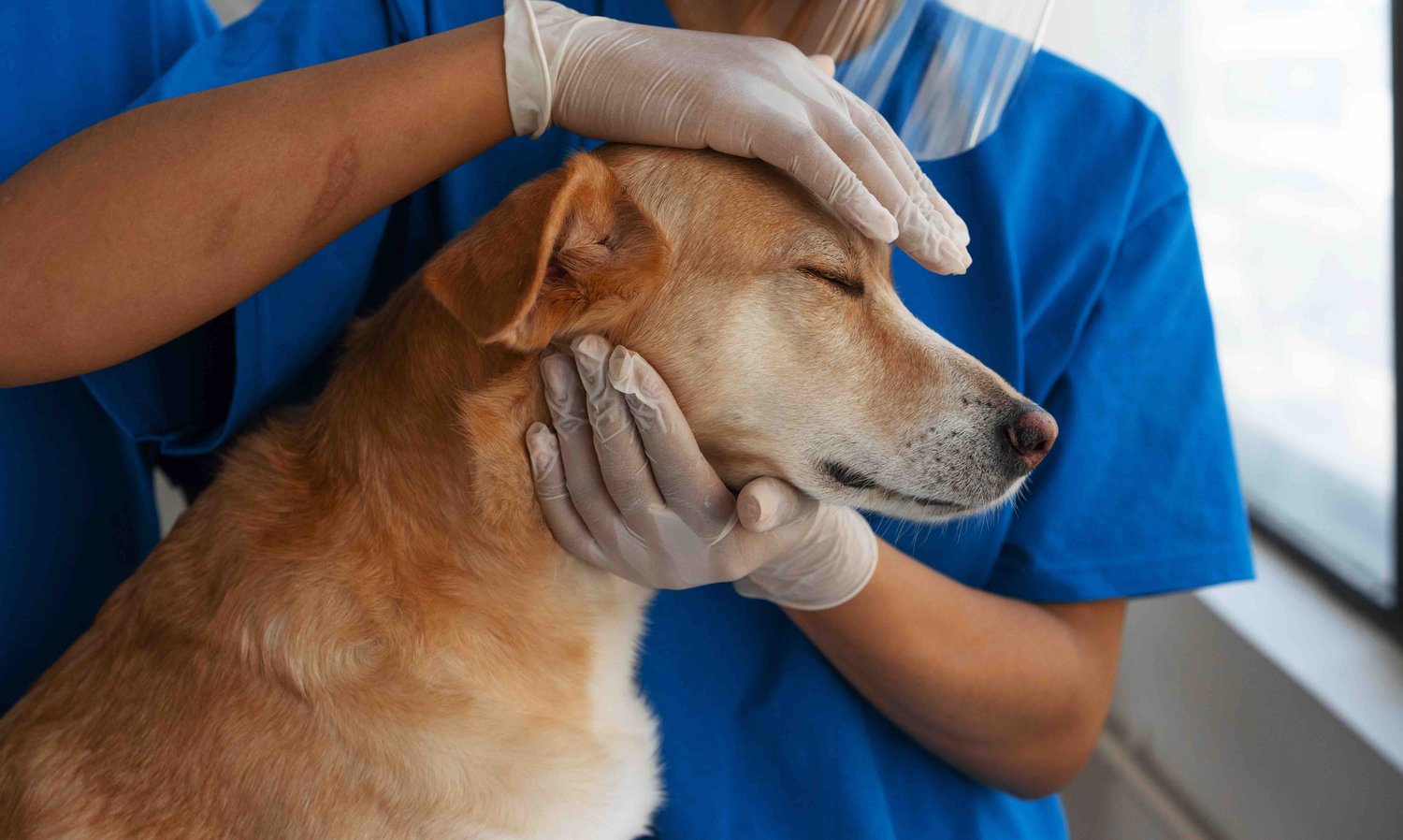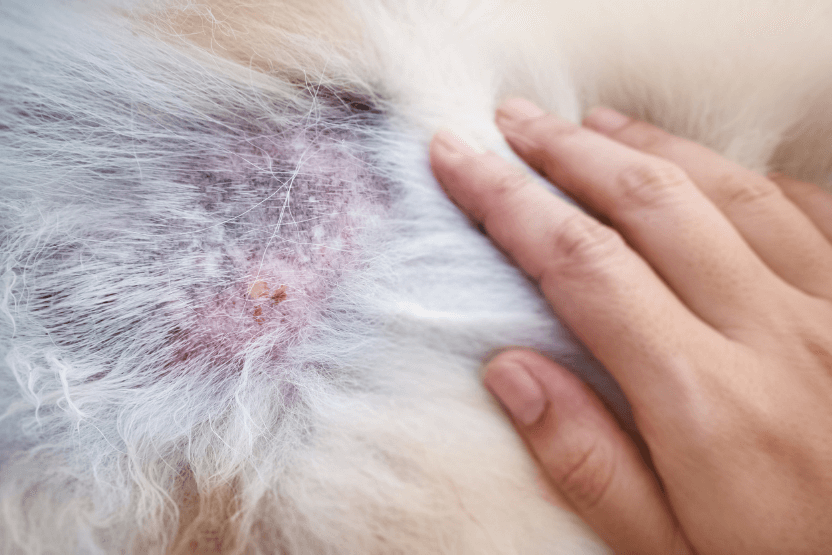What do cancerous sores look like on dogs?
Cancerous skin ulcers on dogs can vary in appearance, depending on the type of cancer. They often present as unhealed wounds, lesions, or growths on the skin that may appear red, inflamed, or raised. These sores might bleed, ooze, or crust over and typically do not heal as normal wounds do. Additionally, some cancers can manifest as lumps or nodules beneath the skin’s surface.
Can dog skin cancer be cured?
The prospect of curing skin cancer in dogs depends on various factors, including the type and stage of the cancer. Early detection and intervention significantly improve the chances of successful treatment. While complete eradication might not always be possible, effective management through surgery, chemotherapy, radiation therapy, or a combination of these treatments can extend a dog’s life and improve its quality.
How long can a dog live with skin cancer?
The lifespan of a dog diagnosed with skin cancer varies greatly based on several factors, such as the type of cancer, its stage, and the chosen treatment. Some dogs respond well to treatment and can live several months to years following diagnosis. However, certain aggressive forms of cancer may have a shorter life expectancy despite aggressive intervention.

How do you treat a skin ulcer in a dog?
Treatment for skin ulcers in dogs involves a multi-faceted approach. Depending on the ulcer’s cause—whether it’s due to trauma, infection, or cancer—treatment may include addressing the underlying cause, cleaning and dressing the wound, and, in cases of cancerous ulcers, seeking veterinary intervention for specific cancer treatments like surgery, chemotherapy, or radiation therapy.
What helps skin ulcers heal faster?
To expedite the healing process of skin ulcers in dogs, maintaining proper wound care is crucial. This involves keeping the affected area clean, applying prescribed medications or ointments, and ensuring the dog’s overall health through a balanced diet and minimizing stress. Following veterinary recommendations for treatment and regular check-ups are vital for monitoring progress and adjusting the treatment plan if needed.
What is the best medicine for ulcers in dogs?
The appropriate medication for ulcers in dogs depends on the underlying cause. For cancerous ulcers, treatments might include anti-cancer medications, pain management drugs, or antibiotics if there’s an associated infection. Always consult a veterinarian for a tailored treatment plan based on the specific type and severity of the ulcer.
What antibiotic kills ulcers?
Antibiotics may be prescribed if the skin ulcer is due to a bacterial infection. Common antibiotics like amoxicillin, cephalexin, or clindamycin might be used to combat bacterial infections in ulcers. However, the choice of antibiotic depends on the specific bacteria causing the infection and should be determined by a veterinarian after proper diagnosis.
Recommended:
- Petco Review: The Power of Together
- PetSmart Review: Where Pets Inspire Us
- Hill’s Pet Nutrition Review: Pioneering Pet Health and Nutrition
- Royal Canin Review: Tailored Nutrition for Every Pet
- Chewy Review: Pet Care at Your Doorstep

Can omeprazole treat ulcers in dogs?
Omeprazole, a medication used to reduce stomach acid, may be prescribed for certain types of ulcers in dogs, particularly gastric ulcers. However, its effectiveness in treating skin ulcers might be limited as it primarily targets gastric issues. Always consult a vet for appropriate medication for skin ulcers in dogs.
How long does a dog ulcer take to heal?
The healing duration of a dog’s ulcer varies significantly based on its cause, size, and the dog’s overall health. Minor ulcers might heal within a few weeks with proper treatment, while more severe cases, especially those related to cancer, may require ongoing management and might not fully heal but can be controlled to provide comfort and extend the dog’s life.
References:
- Mullikin, A. D., & Sorenmo, K. U. (2019). An update on canine cutaneous mast cell tumors: biologic behavior, prognostic factors, and the role of kit in disease progression. Veterinary pathology, 56(1), 10-21.
- Withrow & MacEwen’s Small Animal Clinical Oncology. 5th ed. St. Louis, MO: Elsevier; 2019.
- Ettinger, S. J., & Feldman, E. C. (2010). Textbook of veterinary internal medicine (Vol. 2, pp. 2067-2080). Elsevier Health Sciences.
- American Veterinary Medical Association (AVMA)

